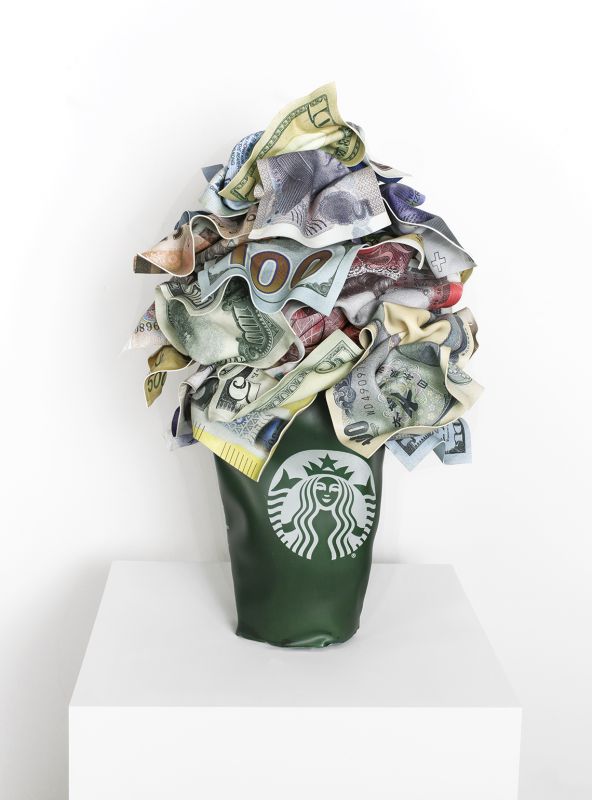Paul Rousso
Starbucks International
mixed media on hand sculpted polystyrene, 31 x 26 x 26 in
Chat with us on WhatsApp
About the artwork
Starbucks International by Paul Rousso is a bold commentary on global consumer culture, merging the iconography of wealth and mass consumption. A sculpted Starbucks cup, overflowing with crumpled currencies from around the world, becomes a symbol of modern-day indulgence and capitalist reach. Rousso’s signature hyperrealist technique exaggerates scale and texture, transforming paper money into a tactile explosion of excess. With irony and precision, the work critiques how global brands like Starbucks absorb and influence cultural and economic landscapes. In this eye-catching fusion of pop icon and monetary mosaic, Rousso invites reflection on value, identity, and globalization’s homogenizing grip.
About the artist
Paul Rousso's works speaks both to the physical and symbolic strength of one of humanity's most universal materials.
Paper is fragile and fleeting, yet it holds immense power - it has potential to carry ideas, preserves history, records value, and conveys beauty. From newspapers and books to banknotes and packaging, paper shapes our culture and daily lives, even in today's digital age.
By elevating paper into monumental sculptures and glossy wall reliefs, Paul Rousso reminds us of its paradoxical nature: humble yet influential, disposable yet transformative. The exhibition invites viewers to reconsider this everyday material, revealing its capacity to embody memory, narrative, and emotion.
Renowned for his hyperreal, oversized sculptures of crumpled currency, candy wrappers, newspapers, and glossy magazine pages, Rousso interrogates our relationship with media, materialism, and memory. His works playfully immortalize what is typically tossed aside—objects meant to be consumed and forgotten—elevating them into timeless icons of contemporary culture.
Rousso’s practice draws from a diverse background in scenic design, digital manipulation, and commercial art direction, all of which converge in his meticulously crafted sculptures.
Through a proprietary process of heat infusion on plexiglass and other materials, he sculpts paper-thin forms that mimic real-life textures with startling accuracy. The result is artwork that is both technically impressive and conceptually resonant—wrinkled banknotes and discarded ads become touchpoints for nostalgia, identity, and cultural commentary.
Influenced by Pop Art masters like Lichtenstein and Warhol, as well as the fantastical stylings of Dr. Seuss, Rousso infuses his work with wit, color, and scale. But beneath the playful surface lies a quiet urgency: a meditation on the impermanence of media in a world where physical print is vanishing.
By preserving these ephemeral artifacts in larger-than-life form, he invites viewers to pause, reflect, and consider what we value—and what we throw away.


